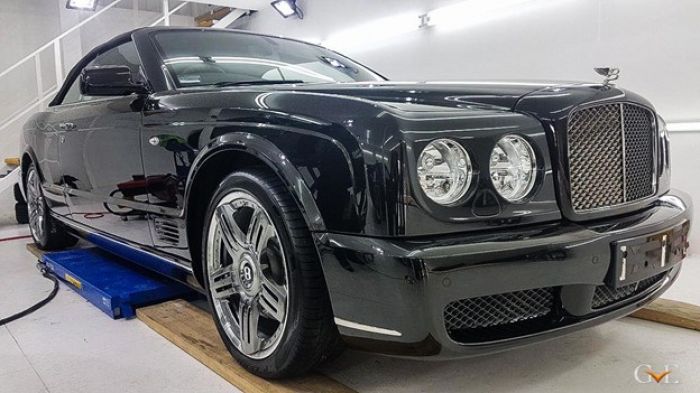
THE ART OF THE LABEL …On the Creation of Coffee, Wine, and Tea Labels for Modern Appreciation
PART ONE – THE SOUL OF THE GRAPHIC DESIGNER IN THE 21st CENTURY
A word to professional graphic artists in this second decade of our 21stCentury… (and likewise to you who are novices in apprenticeage to become graphic artists come the day when a patron realizes your talent and skill)… I truly hope that in reading my treatise you will come to understand, with some degree of shock, to which degree this terrain upon which you have wandered and placed your hopes of a life’s vocation, is a place both highly honorable, and highly ridiculous.
The title of ‘Graphic Artist’ in this century can be looked upon as a permit to stroll unencumbered through a rather strange garden—a place that will enchant you with all the delights of Eden, as it forces upon you the chains of Purgatory. Note that I refer to the profession as ‘Graphic Artist’ and not ‘Graphic Designer,’ since I fear the title Designer may mislead you into thinking that commercial art still exists. Commercial art for most practical reasons, ceased to exist around the time that anarchy began in the form of internet start-up businesses. Here in France where I live, that year was 2001. The only place where commercial art can still be found today—midway through the year 2014—is in the unfortunate world of those who design or market cereal boxes to the masses, or else discount packages of generic soup in aseptic containers.
We live in a time period that is very different artistically from the 1980s and 90s, although those decades don’t feel that far away to us, we who are adults in 2014. The difference in artistic sensibilities today can be found in the casualness of our age. It can be found when you board any airplane in modern times and notice everyone around you dressed in synthetic clothing: shorts, tennis shoes, and t-shirts with phrases boldly and obscenely printed on their chests. That same casualness unfortunately haunts our modern art design. Go to any wine merchant and you will see this. There exists today an incredible assortment of wine bottles with phrases that are quite obscene printed on them. I hate to even mention aloud the names of modern wines that insult the millennia-old art of wine-making, with horrible names on them such as ‘Bad-Ass Cabernet.’ Uttering such a name in a written article is a violation of my artistic, and my literary, taste.
Above, in this article, I feature a wine bottle of my design to which I pay ‘honor’ (in my own façon) to modern design. It is a bottle of soft Italian Soave which pays tribute to history’s extraordinary Patron of Art: Gaius Maecenas: that sensitive Roman who aided both of the poets Horace and Virgil in their extraordinary artistic pursuits. As an artist myself, I honor Gaius Maecenas for the only reason a sensible person should honor a dead man—someone who must have higher cares now than to be honored by the living. I honor him as a way of saying thank you to all of the Patrons of Art who are living and of this world today. All of you executives who have helped finance websites and designers, you may not have realized at the time you invested what service you were doing to help in the survival of ‘Fine Art’ in our century. It is thanks to you that art didn’t take another turn in a direction that would have been destructive to all culture.
Today, ‘fine art’ exists in a profound way, although the definition has changed. Not just for graphic artists, but for oil painters, poets, novelists… But I am not here to talk about those others right now. My first issue concerns the designers, marketers, and producers of wine. Afterwards, I will concern myself with the creators of coffee and tea.
PART TWO – WINE DESIGN IN THE 21stCENTURY
Today’s wine labels marketed in California and other US States are very different from the labels marketed here in France. The people of France who comment on world culture often say—and for very good reason—that France is ten years behind America in cultural trends (musical and commercial trends especially). I often overhear a French man or woman say that something that becomes popular in America will become extremely popular here in France in ten years time. I have seen this phenomenon to be the case myself, and it may prove true for wine design as well. While the wine labels in France only seldom venture into the casualness of American design trends, we are nevertheless aware of the new trend in America. The trend pays homage to casualness in a way that ranges from the very clever, to the very obscene. In an effort to first speak of the positive values of people, I will first talk about the cleverness of American design.
There is great ingenuity, and even occasional genius, to be found in today’s wine design in America. The genius, however, is only found in the techniques and the level of mastery; for current design trends in America are certainly not beginning any new or revolutionary art movements. Rather, there is an oldness, a nostalgia for the past, displayed in contemporary design. What is popular now is everything in that is ‘retro.’ Current designers love to visit the past through designs featuring everything from wrinkled schoolbook notepaper, to images revisiting the look of old fashioned Polaroid pictures reminiscent of the 1970s. Although Polaroid stopped making their famous cameras a few years ago, these historical objects are experiencing an enormous resurgence in popularity; and those who cannot find a second-hand Polaroid or lookalike camera today can still simulate the style of their photos using Photoshop or Instagram.
I have observed five other noticeable trends in today’s American wine design. Like retro photography techniques and wrinkled paper, none of them offer anything new or revolutionary in style. The modern trends are:
1. Other Retro Styles: Along with wrinkled paper and faded photographs, other elements of the past are entering into wine design. Among them are 1970s Scandinavian design and American style artefacts from the 1920s-40s.
2. Simplicity of Typography: This is the most common of current trends in American wine design. Not only is the typography simplified, but so are the logos and any messages included on the bottles. This technique is sometimes made more complex (and more costly) through the embossing or etching of the logo. Although the goal of this technique is ‘simplicity,’ it is one of the most difficult styles for label artists to master. It follows the old design maxim: “You need to first know how to follow the rules in order to break them.”
3. Complexity of packaging: This is not retro, thus it is a new technique. But it is not revolutionary. The style should be credited to the modern design technique of luxury perfumes. These wine package designs cost more than a simple printing of a label, thus for this reason, there is the suggestion that this technique is ‘gimmicky’—although as a marketing technique, it is quite effective as long as the cost of the wine doesn’t hint that the packaging is making it over-priced. The complexity of packaging can range from very costly, to very retro (thus very inexpensive to produce—usually) encasements for the bottles. Sometimes the packaging is more ingenious, using novelties, such as nets of golden threads, to envelope the wine bottle.
4. Use of Found Objects: Also a ‘retro’ technique (thus, introducing nothing new), the style uses scraps of what many would consider garbage: everything from old, faded train or subway tickets, altered in their message to advertise the wine, to medical documents that give a doctor’s prescription for the wine suggesting that it is vital to the health of the consumer to purchase the bottle.
5. Use of Humor—often tasteless humor, or on the edge of being so. This, according to many, including myself, is the most annoying of current trends. I myself believe it shows a disrespect for the ancient art of wine making. Sometimes this ‘humor’ involves the use of swear words, other times it displays a message that brags about the wine’s potency, and ability to render people light-headed or euphoric, other times it involves labels that are either self-deprecating, stating that the wine is of very poor quality (when it’s probably just mediocre). Other times it involves labels that are simply silly… for example, disguising the wine with the suggestion that it’s actually a bottle filled with potato chips!
My guess is it won’t take ten years for these trends to reach Paris, although I know they won’t influence the rest of France, which remains very traditional where wine is concerned. Yet although Paris still remains ‘classical’ in style for a large percentage of the population, the trend of the casual lifestyle, as well as a less serious perspective towards life, is gradually but effectively taking its hold on the French capital.
In summary of the wine label trends internationally: I feel that the major pity from an artist’s point of view is that ‘there is nothing new under the sun.’ This period in our history will, unfortunately, not be remembered for having witnessed a new artistic movement. Unless, that is, a label designer of some unusual genius comes to emerge from the masses.
Merci et à bientôt !
Roman Payne














